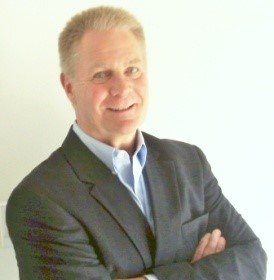Although Baby Boomers are credited with starting the fitness revolution in America, their lifestyle has created a generation where 20% have diabetes, 39% are obese, and 70% are overweight. Not quite the picture of health Jane Fonda envisioned in the 60s when she made all those workout videos. For years, experts have been telling boomers that the solution to these health conditions is lifestyle choices. Boomers know that exercise is the key component to a longer, healthier, and happier life. In fact, a recent AARP study found that active people enjoy an additional 16 years of healthy living than sedentary people.
Unfortunately, there is a downside to all the exercise. Many boomers end up in the ER, doctor’s office, or sports medicine clinics because their bodies can’t keep up with the demands placed on them. It seems that the key to enjoying the fountain-of-youth benefits of exercise is knowing what’s right for your body.
Phil Faris: Today’s guest, Mark Palmieri, knows exactly how to do that for Baby Boomers. Mark is the owner of Palmieri Personal Training, Inc., 1millionfit.com, and fitness director for Three Rangers Foundation; Mark also acts as a mentor to the Three Ranger Whiskey. He has a degree in exercise science from Eastern Illinois University and has also completed his master’s coursework in exercise physiology. Mark has been a personal trainer for over ten years, having worked with a diverse population. He’s worked with people between the ages of 6 to 89, professional athletes, and people with special health issues. Mark has a simple philosophy, “Have a purpose, have a plan and have fun.”
Mark Palmieri: Thank you, Phil. This is an outstanding opportunity.
Phil Faris: I’m glad you could join me today. As I mentioned, the benefits boomers get from exercise also has some side effects or some risk involved. What’s your experience been with Baby Boomers who want to get fit, stay fit, but without getting injured or spending time in the ER?
Mark Palmieri: That’s a major point and could potentially be the most important one. Safety in any exercise program that I’m going to do is the first and foremost priority. A lot of times, we think exercise should be intense. The “go hard or go home” mentality, which many Baby Boomers associate exercise with, is not necessarily the best way. That’s when you start assessing injury risk versus fitness reward. In my case, I’m going to start with a simple program focusing more on the fundamentals.
As we improve the movement quality, we can have some more fun. We can increase the intensity to avoid those injuries. I haven’t had anybody I’ve ever trained experience a major injury, like a back herniation, or shoulder, or hips or knees injuries. People are probably thinking about those body parts, so we must do a needs assessment. The client or prospect may have an intensity level that they wish to work towards, but it’s on the professional to be able to identify when to go for it. They must determine if the client can reach that intensity risk now or wait a little bit to get the body a little bit more prepared.
Phil Faris: You mentioned movement quality. Can you clarify what you mean by that?
Mark Palmieri: Anytime somebody comes in as a new client, that interaction for me is always going to be very communicative, but it’s also going to be physical. We’re going to conduct an assessment. The assessment that I use is called a Functional Movement Screen, and it looks at basic movement patterns, like a squat, lunge and a push pattern. It’s going to look for different mobility issues and test for some rotational mobility and stability, as well. What that’s going to do is give me a picture, and give the client a picture, as to where they’re comfortable moving.
If there’s a position they can get into that starts to cause a little bit of pain, like knee pain on a squat, an easy way to test it is to go to the sink, grab onto it and then allow your body, in an assisted fashion, to move to the lowest depths that you’re comfortable. If that depth is not that far, that’s okay. That’s where we’re going to start our process. Eventually, as a coach, or trainer it’s my job to help them get a little bit more mobility and more strength.
Phil Faris: I have some knee issues. I have some torn meniscus, and I found that I couldn’t squat as deeply as I used to I have some functional limitations there. It’s very frustrating for me because I was always taught to go below parallel, and right now that’s just something that won’t happen. How do you work with people like me who have some issues that limit their mobility?
Mark Palmieri: That’s a wonderful question. The only real way to handle it is a unique, individual basis. To answer your question specifically, knowing that you’ve had an athletic background, and you’re probably very comfortable with most of the movements. If you’re using phrases like, ‘we’ve got to go below parallel.’ A lot of science has come out looking at the movement patterns. I don’t want to get too specific with the physiology of stuff because it gets a little muddy, but there are a lot of people who are incapable of going that low functionally, just because their bone structure won’t allow it. Well, they can, but they’re going to be hurting hips or knees.

